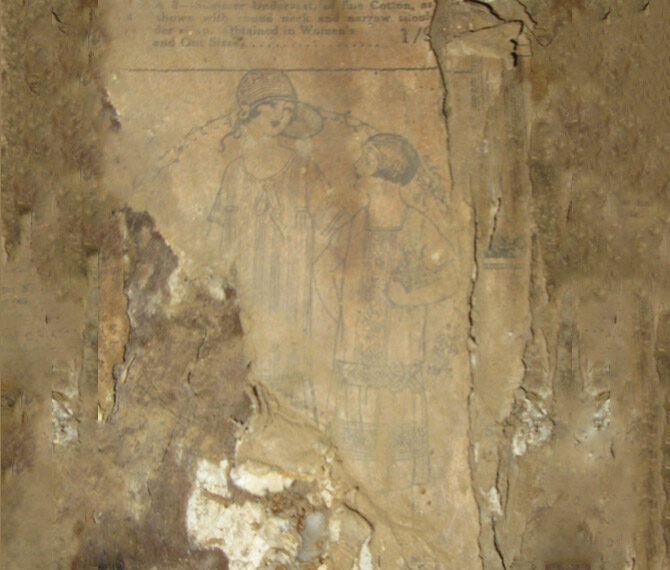Woolshed history in the Southern Tablelands
Lyn O’Brien, Manager of our Canberra office is contributing to the preparation of a Conservation Management Plan for an unusual woolshed located in the Southern Tablelands of New South Wales. The Woolshed was constructed during the depression period in the 1930s and stands as an example of the re-use of materials during this time of scarcity.

The Woolshed has been constructed using old upright timber slabs from an older disused cottage. The wall slabs have been decorated with layers of newspapers which have then been overlain with wallpaper. Over time as the wall paper deteriorated, further layers of newspapers were applied and then the more expensive wallpaper applied.
According to Lyn, the preservation of such fragile materials is extremely rare and represents the potential to research the use of wallpapers in the region. Wallpapers can reveal information on stylistic trends, materials, and the wealth and status of occupants. Visible fragments displaying colours and stylistic patterns are generally not presented to the public reinforcing a view of harsh colonial life rather than reflecting the efforts of the families (generally the role of women) to gentrify and create an area of domestic space. The vibrant colours and patterns would have created a cosy domestic environment as well as retaining heat and preventing drafts through the cottages. The role of women and the creation of a feminine sphere of influence are reflected in these perishable materials.
Based on the preliminary research the newspapers date from 1900s to 1930s. Using this information it is possible to estimate the approximate time of application of each of the richly coloured wallpaper layers.
It is exciting to work alongside the professional conservators who are assessing the newspaper conditions and how to make the papers a feature of the adaptive reuse of the heritage woolshed, while maintaining their condition and preventing further degradation.
1920s advertisement on woolshed walls.






